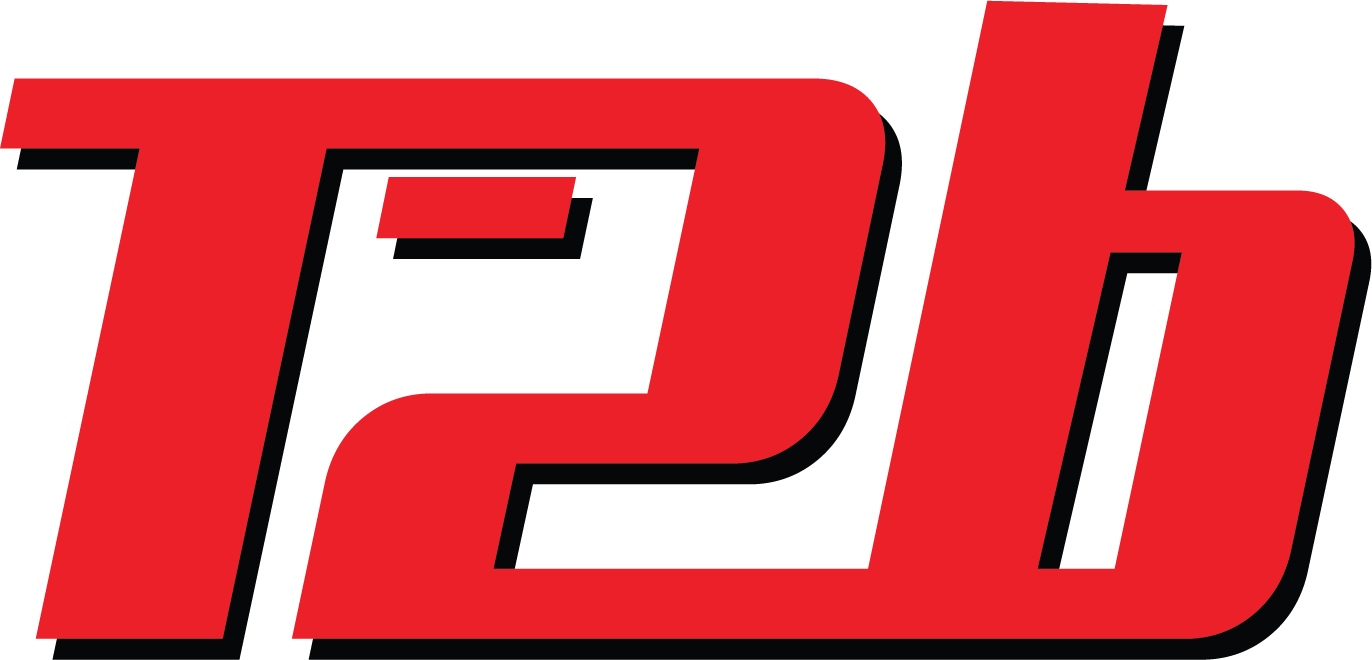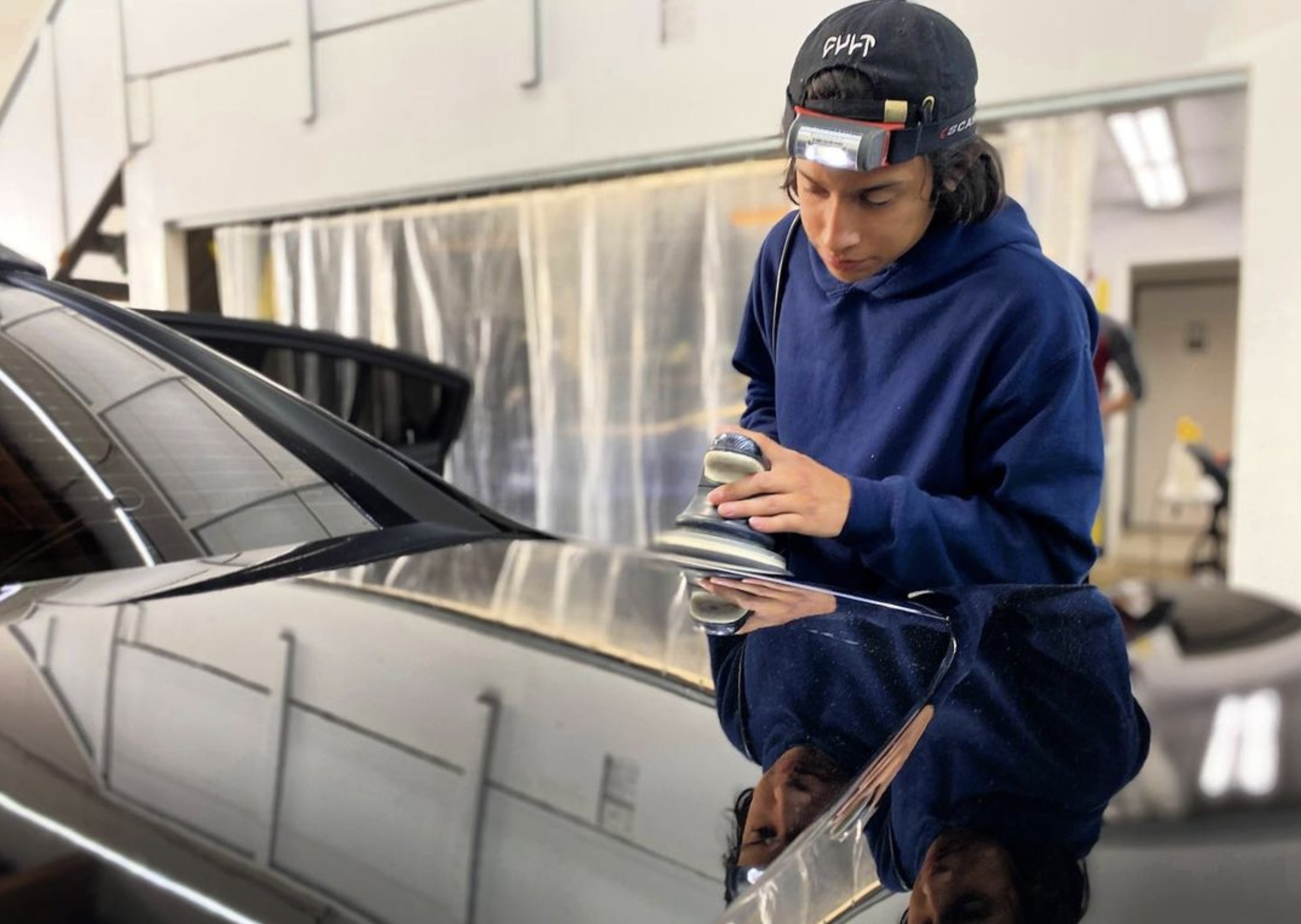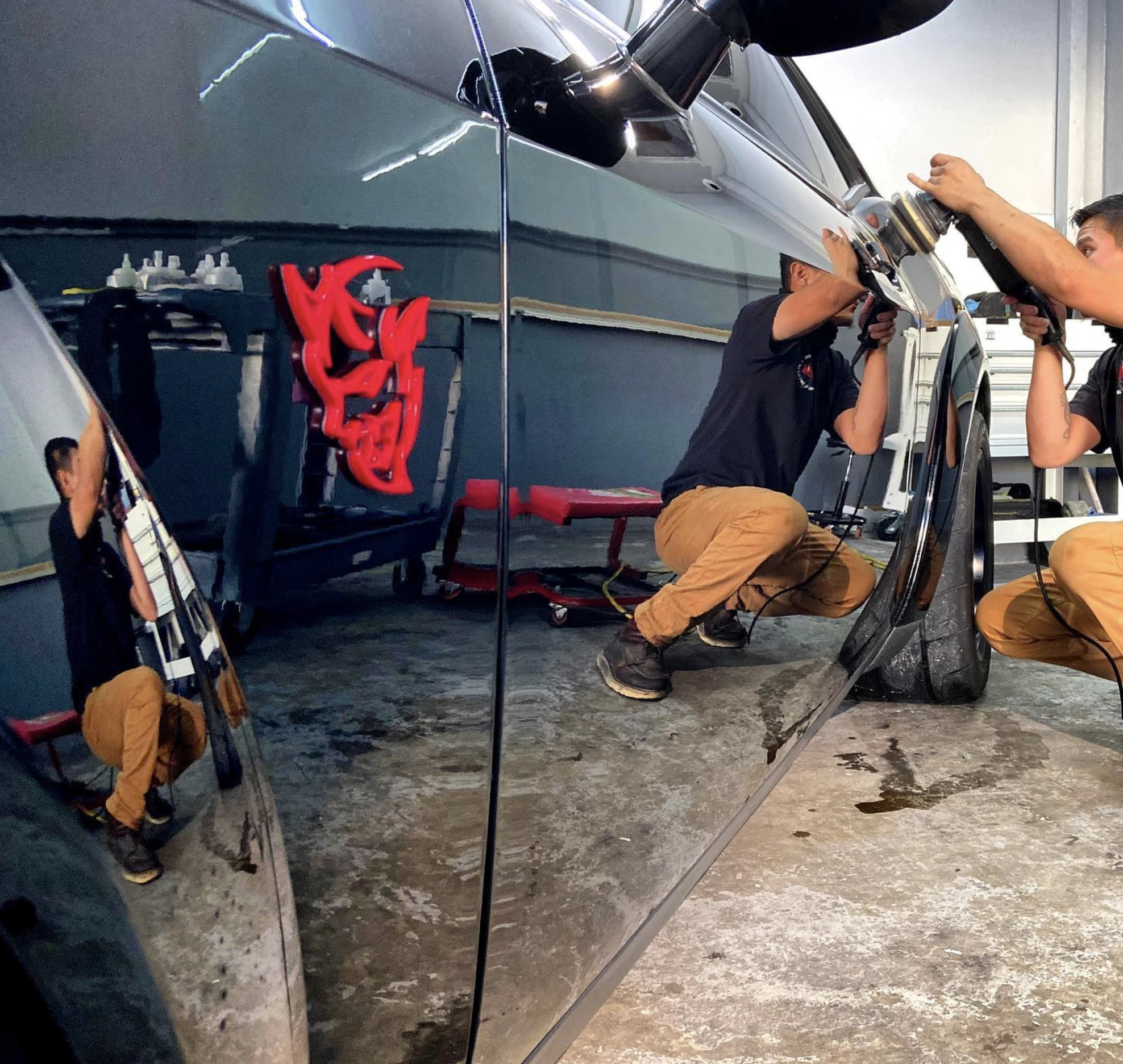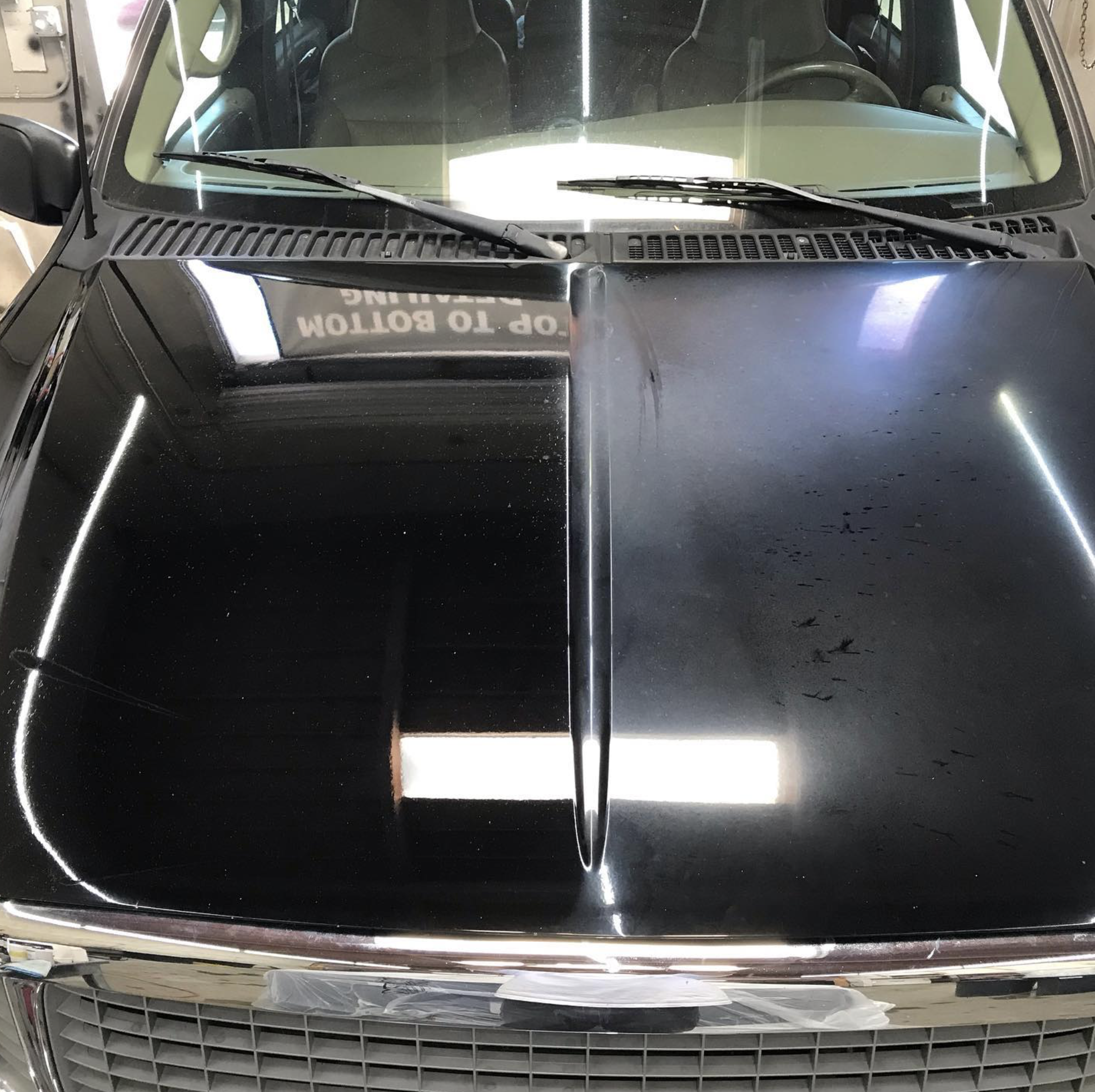New & used vehicles can have various types of paint defects, including:
Swirl marks: Swirl marks are circular scratches on the surface of the paint that are often caused by improper washing or drying techniques, or by using abrasive materials to wash or dry the car.
Buffer trails: Buffer trails are marks left behind by a buffer or polisher. These marks can be caused by improper technique or by using a buffer or polisher with a worn or dirty pad.
Orange peel: Orange peel is a textured surface on the paint that looks like the skin of an orange. It is caused by the paint not being applied evenly or by the paint drying too quickly.
Fish eyes: Fish eyes are small craters or bubbles in the paint that are caused by contaminants on the surface of the car, such as oil or silicone.
Dirt inclusions: Dirt inclusions are small particles of dirt or other contaminants that get trapped in the paint during the painting process.
Overspray: Overspray is a condition in which paint from another vehicle or object has landed on the surface of the car during the painting process.
Swirl marks in paint are circular or semi-circular scratches on the surface of the paint. They are often caused by improper washing and drying techniques, such as using a dirty sponge or towel, or wiping the car with a dry cloth. Swirl marks can also be caused by using abrasive polishes or waxes, or by using a rotary buffer incorrectly.
Swirl marks are particularly noticeable on dark-colored cars and can be unsightly. They can also reduce the shine and gloss of the paint, making the car look dull and faded.
To prevent swirl marks, it's important to use proper washing and drying techniques, such as using a high-quality microfiber towel and a pH-neutral car shampoo. Avoid using abrasive polishes or waxes and be sure to use a dual-action polisher with the correct pads and polishes for your car's paint type if you need to remove swirl marks.
Buffer trails are a type of paint defect that can occur when using a rotary or dual-action buffer during the paint correction process. They are often visible as a series of parallel lines or marks on the paint surface that can detract from the appearance of the vehicle.
Buffer trails can be caused by a variety of factors, including using the wrong type of pad or compound for the paint surface, using too much pressure or speed during the buffing process, or failing to properly clean and maintain the buffer pad.
To avoid buffer trails, it is important to choose the right tools and products for the specific paint surface you are working on, and to use the correct techniques when buffing the paint. This may involve starting with a less aggressive compound and pad combination and working up to more aggressive options as needed, as well as using light pressure and speed to avoid creating excessive heat and friction on the paint surface.
Regularly cleaning and maintaining the buffer pad can also help prevent the buildup of compounds and debris that can contribute to buffer trails.
Orange peel is a common defect in automotive paint, characterized by a texture that resembles the skin of an orange. It occurs when the paint is applied unevenly or dried too quickly, leaving behind small bumps and ridges on the surface. Orange peel can be caused by a variety of factors, including improper spraying technique, incorrect spray gun setup, or incorrect viscosity of the paint. Orange peel can also be exacerbated by environmental factors such as high humidity or extreme temperatures. In some cases, orange peel can be corrected through wet sanding and polishing techniques, although it may require repainting in severe cases.
Fish eyes in paint are circular or oval craters that appear on the surface of freshly painted objects. These craters are caused by the rejection of paint by the surface, which is usually the result of contamination or improper surface preparation.
Contamination can come from many sources, including silicone, oils, grease, dust, and other foreign materials. Fish eyes can also occur if the surface is not properly cleaned or degreased before painting.
Dirt inclusions in paint refer to small particles of dirt or debris that have become embedded in the paint during the painting process. These can be caused by a variety of factors, such as inadequate surface preparation, contamination of the paint, or debris in the air during the painting process. Dirt inclusions can detract from the appearance of the paint and may also compromise its durability over time if left untreated. Correcting dirt inclusions typically involves using abrasive techniques to remove the affected layer of paint and then refinishing the surface. It is important to address dirt inclusions as soon as possible to prevent further damage and ensure a smooth and even finish.
Overspray refers to the tiny paint particles that land on a vehicle's surface during a paint job. Overspray can occur when painting a nearby surface, such as a building or another vehicle, and the particles become airborne and settle on the car's surface. Overspray can create a rough, gritty texture on the paint and give the appearance of little bumps or speckles. It can also affect the glossiness and smoothness of the paint, making it look dull or uneven. Removing overspray from a vehicle's paint can be a delicate and time-consuming process that requires special solvents and techniques to avoid damaging the underlying paint.
Call us or visit us at the shop if you have any questions.
32839 Temecula Pkwy #A Temecula, CA 92592
Mon - Fri // 9am to 6pm
951. 775. 7662 // Call or Text
sales@toptobottomdetailing.com





